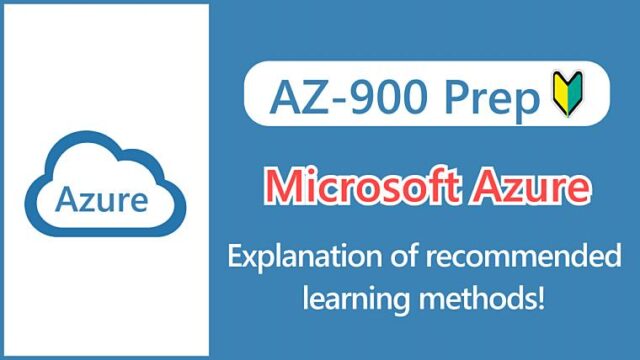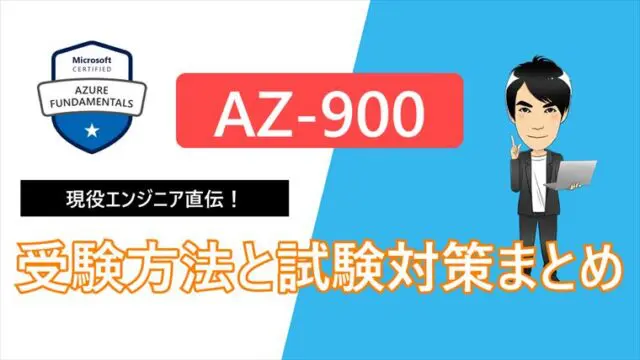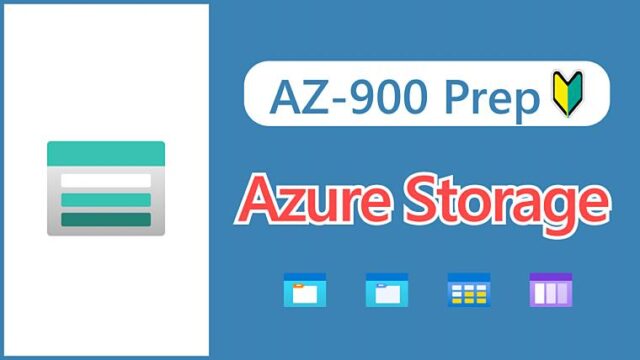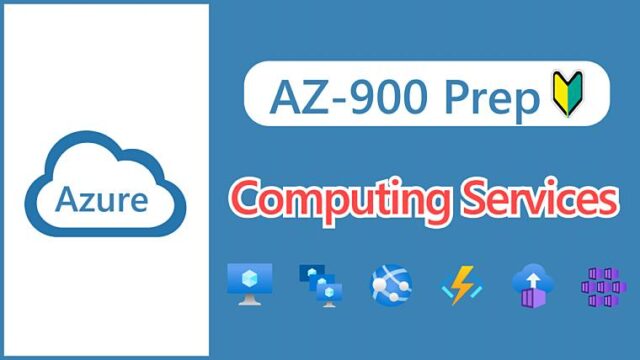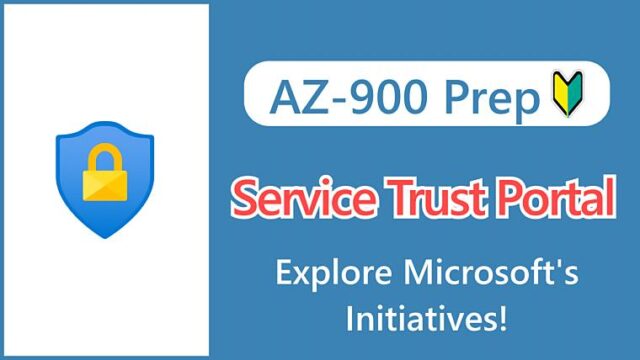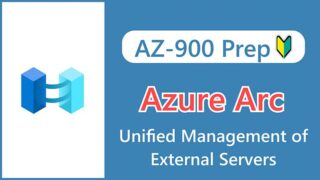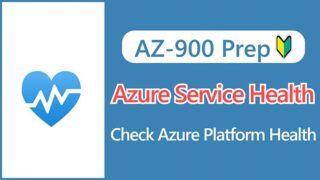【AZ-900】What is Azure Advisor? Optimize Azure Environment with Best Practices!

Hi, I’m Makoto, a freelance engineer.
In this article, I’ll explain Azure Advisor.
As you can see from the word “Advisor,” it’s a useful service that provides advice on using Azure. Please read to the end.
Let’s get started!
What is Azure Advisor?
Azure Advisor is like a consultant in Azure, automatically analyzing deployed resources and displaying recommendations (“you should do this”) according to common best practices. It’s similar to AWS Trusted Advisor in AWS.
Azure Advisor is free to use.
You can check it by clicking on the Advisor menu in the Azure portal.
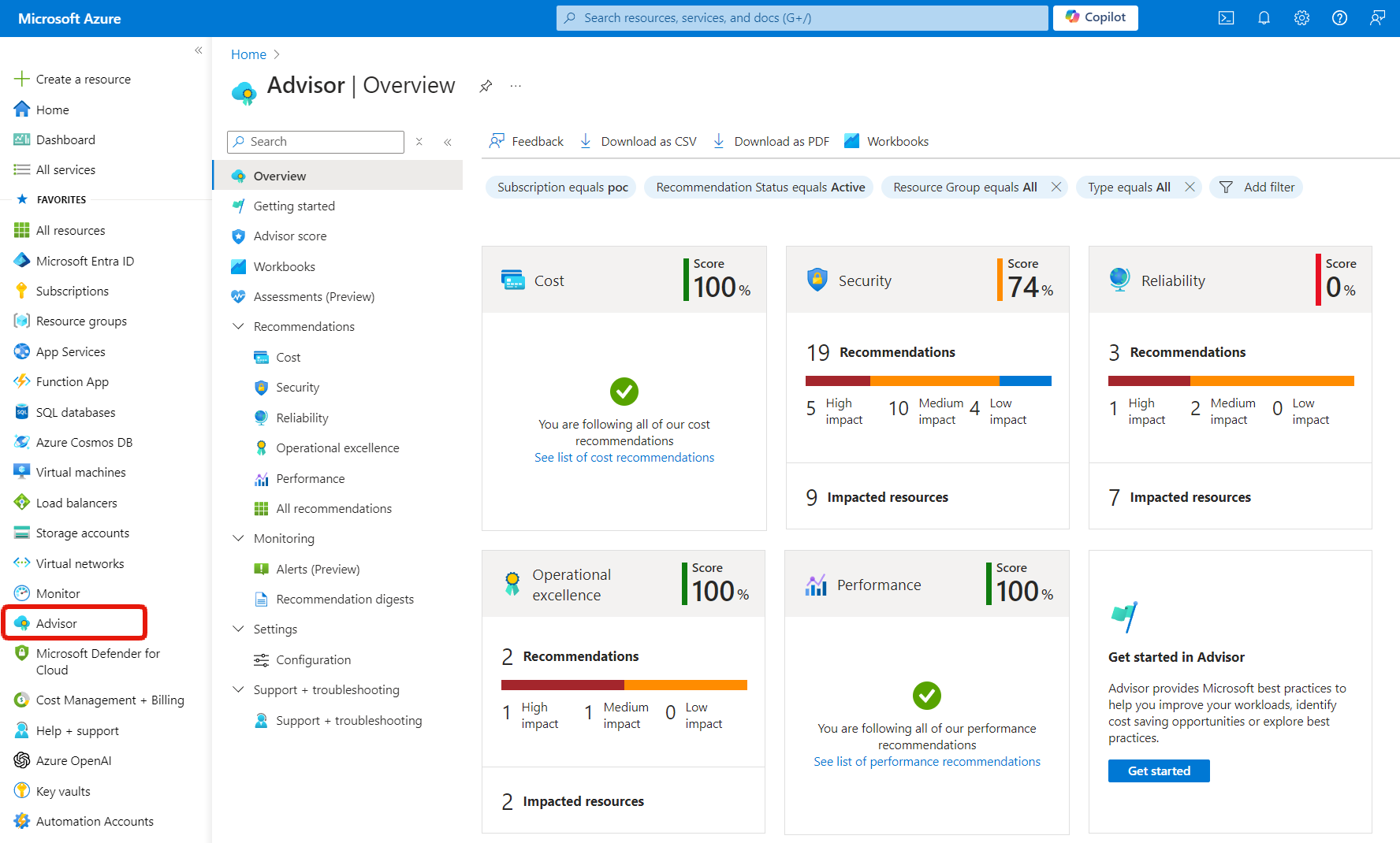
Five Categories
Azure Advisor recommendations are classified into the following five categories:
- Reliability
- Security
- Performance
- Cost
- Operational Excellence
Using virtual machines as an easy-to-understand example, there are recommendations such as:
- Resize or stop VMs that aren’t used much
- There are disks isolated and not connected to VMs (delete if unnecessary)
- Enable backup for VMs
Note that Operational Excellence can be a little difficult to understand.
Operational Excellence provides recommendations for streamlining workflows and making resources easier to manage as you operate Azure resources.
For example, there are recommendations such as:
- Limit regions or SKUs with Azure Policy
- Update SDK versions to the latest
- Increase quota limits to avoid hitting restrictions
Advisor Score
Azure Advisor has a feature called Advisor Score that shows how well you’re following recommendations. The more recommendations you follow, the higher your score.
You can check the list of recommendations by clicking on the tiles for the five categories. (You can also check from the recommendations menu)

It’s fun to work through each recommendation and increase your score because it feels like you’re leveling up your Azure environment.
Advisor Alerts
Azure Advisor also has settings for sending notifications.
- Alerts
- Recommendation digests
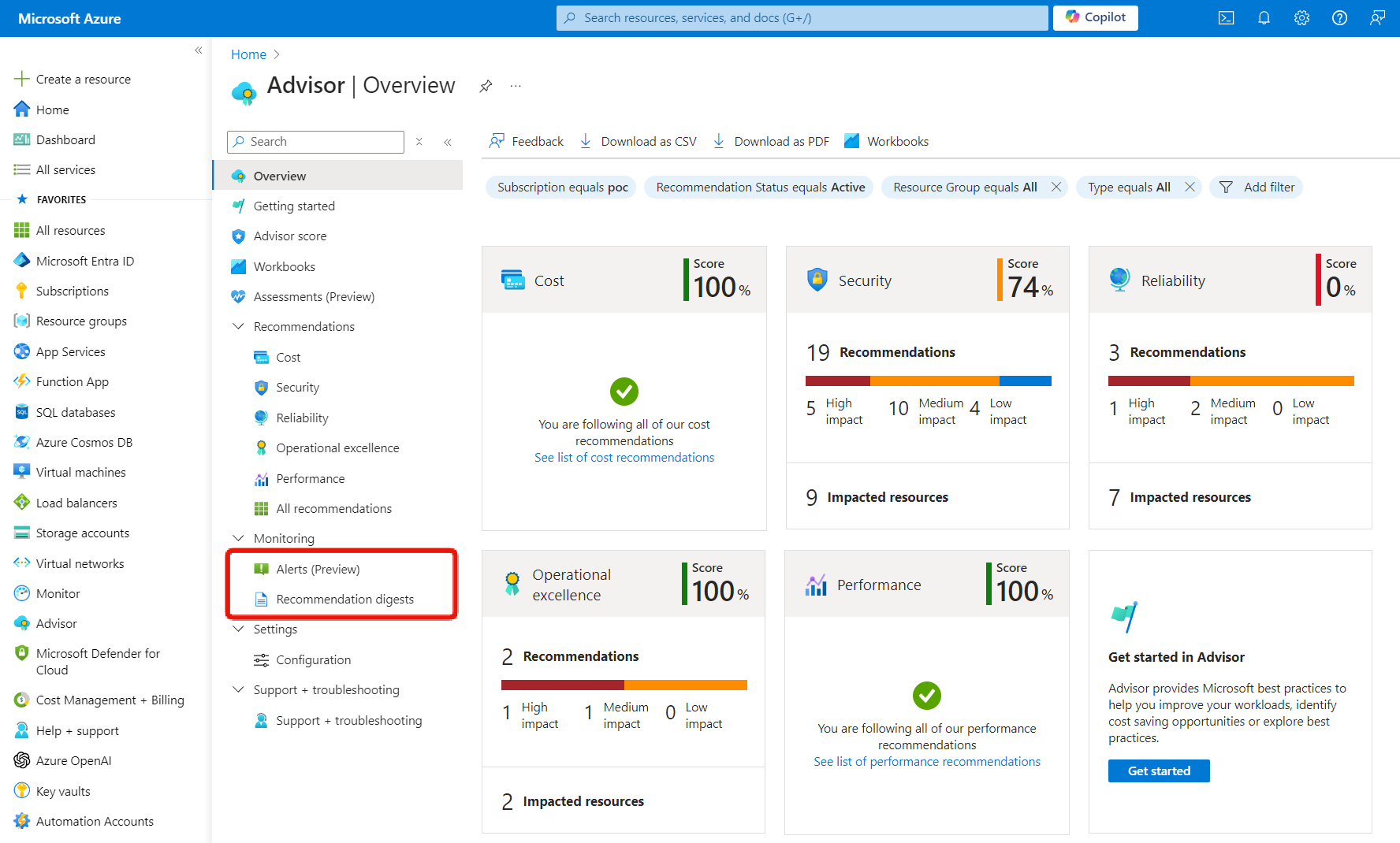
With Advisor alerts, you can receive notifications when there are recommendations that meet specific conditions.
In the following example screen, the category is set to any, and alerts are set only for recommendations with a “high” impact level.
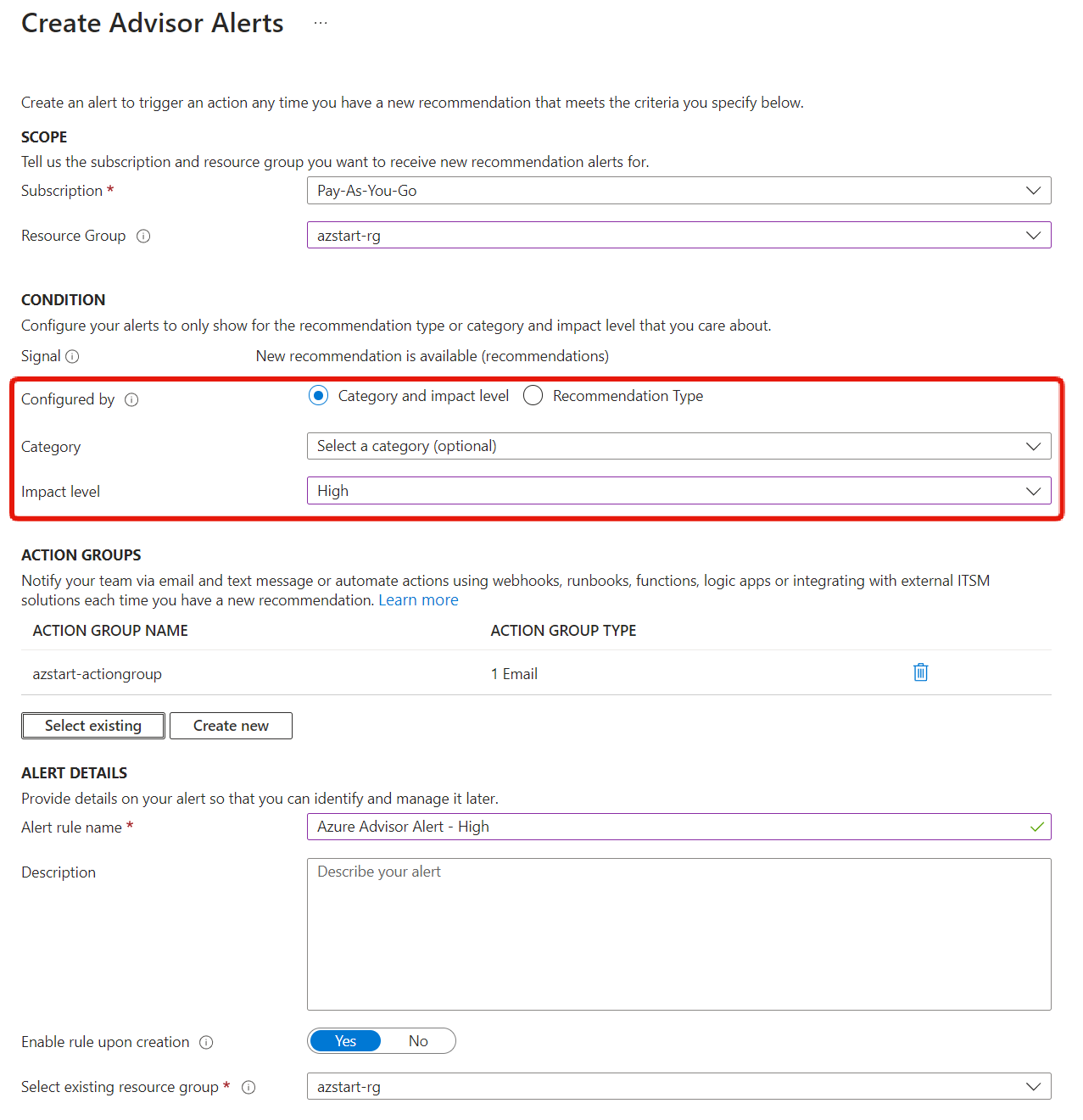
Advisor Recommendation Digests
With the recommendation digests, you can receive regular reports.
In the following example screen, it’s set to receive weekly reports on recommendations for all categories.
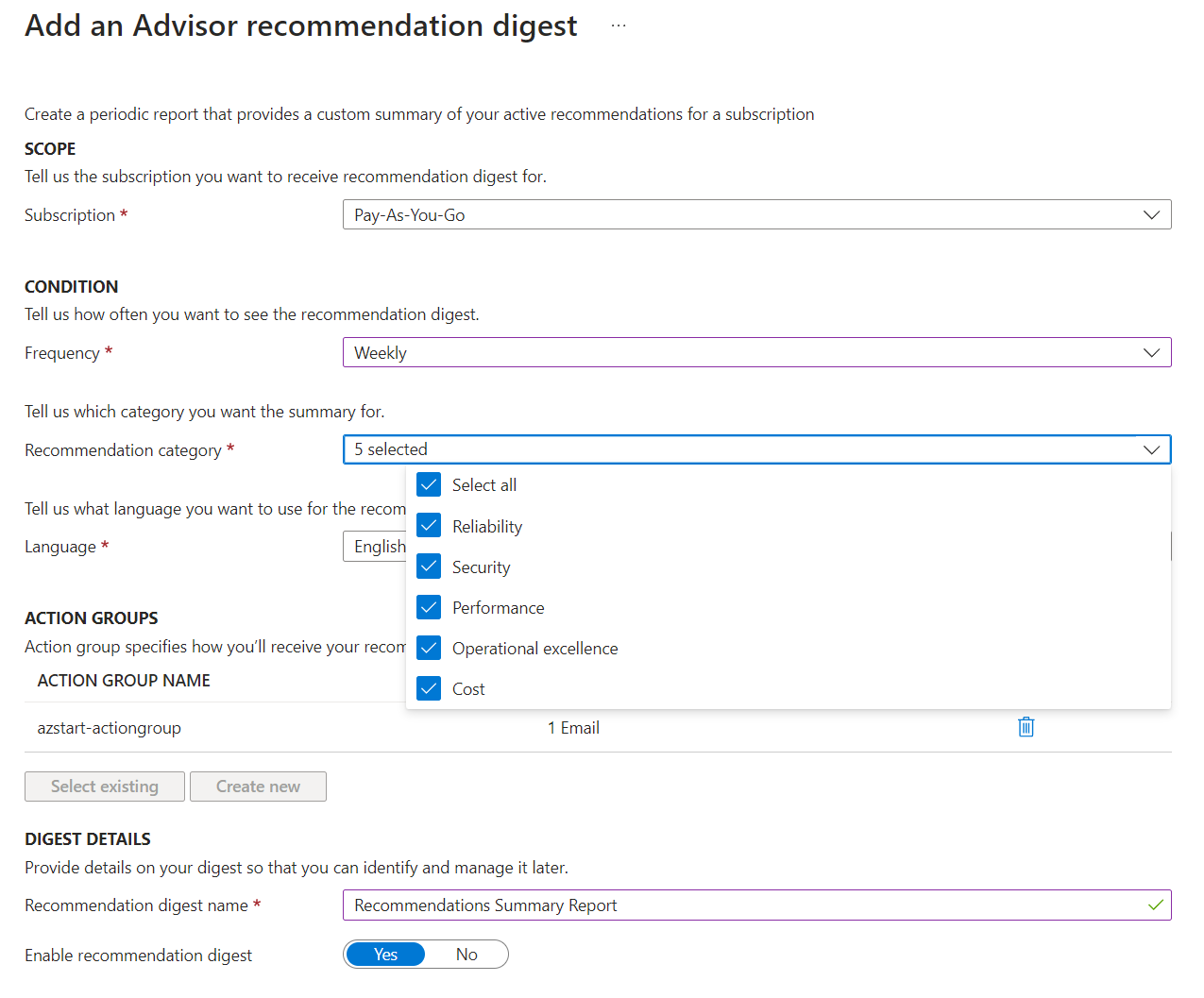
Things to Know About Azure Advisor
Here are some points to note that are likely to be asked on the AZ-900 exam.
Does Not Restrict Usage
Azure Advisor only suggests recommendations and does not restrict the use of anything.
Recommendations are for Existing Resources Only
Azure Advisor analyzes existing resources and provides recommendations.
It doesn’t display recommendations like “this is what you should configure” when you create new networks or virtual machines.
Paid Services May Be Required
Using Azure Advisor itself is free.
However, some recommendations may require the use of fee-based services.
For example, the following recommendation suggests configuring a private endpoint (private link) to securely access a storage account.
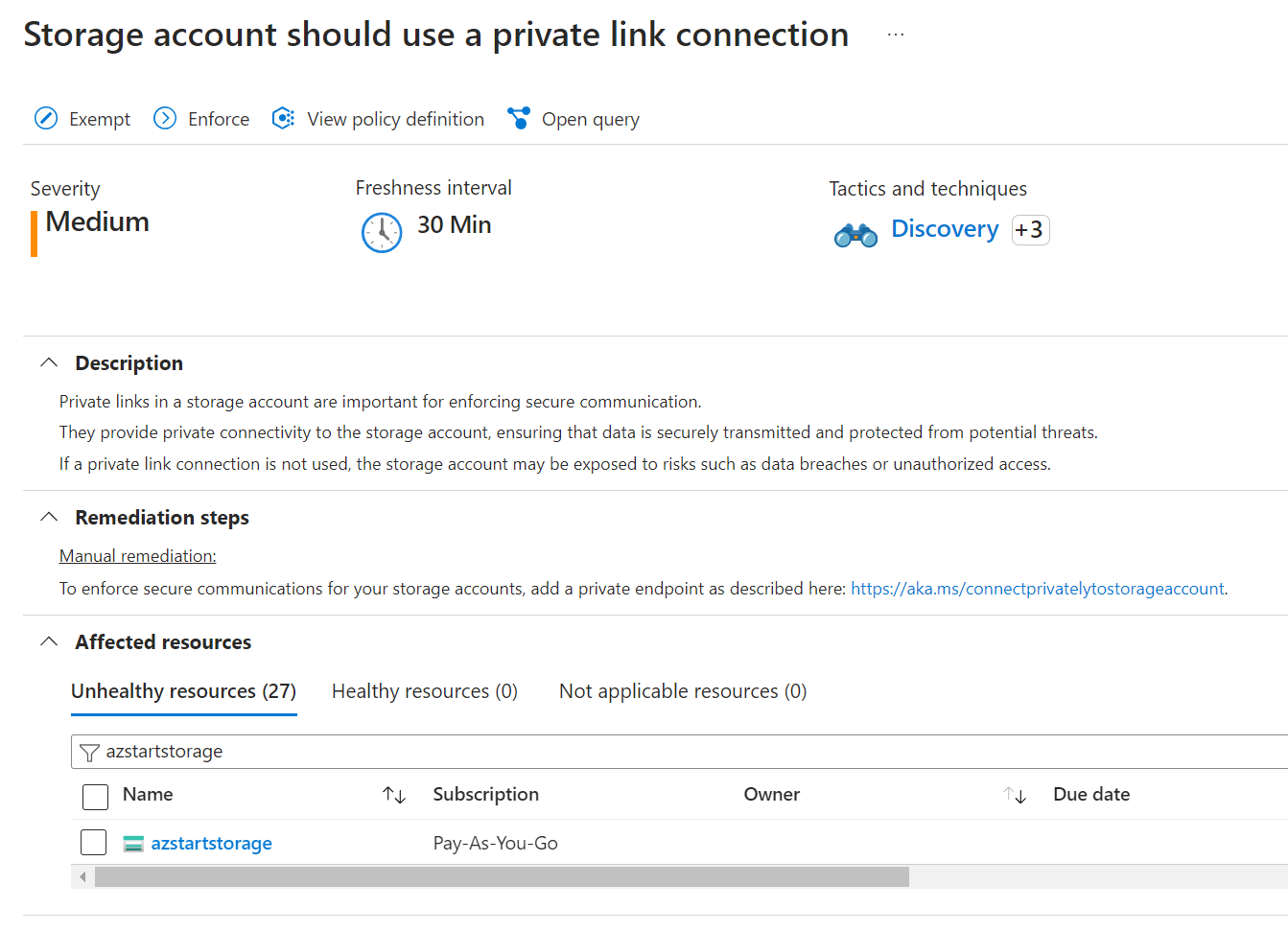
Summary
In this article, we have covered an overview of Azure Advisor. For AZ-900 exam preparation, make sure to focus on the “Points to Note” explained at the end.
Looking at Azure Advisor’s recommendations can also be educational from a design perspective, helping you to understand “what aspects should be considered for configuration”.
It might be a good idea to start by looking at the “Cost” category, where the content of the recommendations and their implications are easy to understand.
That’s all for now. See you next time!


